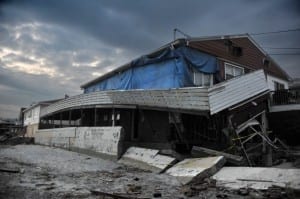BY VANESSA REMMERS (STAFF WRITER)
DINWIDDIE – Just days after a gunman killed 20 first-graders and six staff members at a Connecticut elementary school, security measures and emergency preparedness climbed higher on the Board of Supervisors’ priority list for the new year.
Supervisors on Tuesday looked to the broadened focus of the Dinwiddie Local Emergency Planning Committee as one way to prevent incidences like the Sandy Hook Elementary School shooting from happening in Dinwiddie.
A 1984 chemical disaster in Bhopal, India, that resulted in 8,000 deaths over two days prompted LEPC establishment throughout the country. The primary goal of the LEPC became educating residents about potential chemical hazards and developing emergency response plans.
But after years of natural disasters, fire, terrorism threats and school shootings, Dinwiddie’s LEPC has taken on additional roles. Since its establishment in 2007, Dinwiddie’s LEPC membership has also grown to include 22 state and local organizations, all members of the Board of Supervisors and the county administrator.
“The law says each locality has to have an LEPC, but there is nothing that’s prescribed or legislated as far as how far a local planning committee can go in terms of some emergency preparedness and the like,” said LEPC Chairman Ray Spicer.
This year, the LEPC has set their most ambitious goal yet for reaching out to the community with 30 presentations completed by June 2013.
“The premise was chemical hazards, and it has kind of evolved from there. They voted to be more inclusive of all those disasters. And why not … let’s face it, the incidences of major significance are happening more frequently,” Spicer said.
The LEPC presentation stresses knowledge of emergency plans for different local facilities as well as creating a disaster kit to help be prepared for a minimum of five days.
“We do want to get the message out that there is some amount of personal responsibility,” said County Administrator Kevin Massengill. “In thinking about the incident in Connecticut, parents need to know plans for their home, but also the school’s emergency plans.”
School Board Chairman William Haney said that school emergency plans will not see change, but there may be tightening of school security in the aftermath of the Sandy Hook Elementary School shooting.
“We are doing a survey and seeing what we can afford to do and what is cost-effective,” Haney said.
A security review several years ago implemented some remote cameras and increased lighting, but the School Board could not afford other desired changes. In the next year, Haney said that the School Board is looking at controlling school access and increasing security systems within the school’s physical facilities.
“I was in California, and a lot of the schools were open campuses. And I was thinking, oh my goodness, at least we don’t have that. They need a fence, some kind of physical barrier to keep outsiders out,” Haney said. “We are probably going to take steps in the fairly new future ⦠to implement some kind of security system without being too restrictive.”
The Dinwiddie school system is not the only one of its kind that the Sandy Hook Elementary School shooting will effect. According to a statement, Prince George Police Chief Ed Frankenstein, School Superintendent Dr. Bobby Browder and County Administrator Percy Ashcraft are planning to incorporate additional training exercises for school personnel and public safety first responders. Officials are also in the process of re-evaluating existing school crisis policies.
On a legislative level, Dinwiddie Board members wondered what could be done to prevent incidences like the Sandy Hook shooting.
“With the young man in question, mental health and illness is a big issue. We know that there is a lot of mental illness within the jails, but there are so many walking the streets that we still don’t know about,” said Supervisor Brenda Ebron-Bonner.
Adam Lanza, the Sandy Hook Elementary School gunman, has been reported to suffer from Asperger’s Syndrome. Supervisor Daniel Lee felt that more than mental health awareness was needed to combat such shootings.
“We need to look at both gun control and mental health, and that comes from someone who owns guns,” Lee said.
